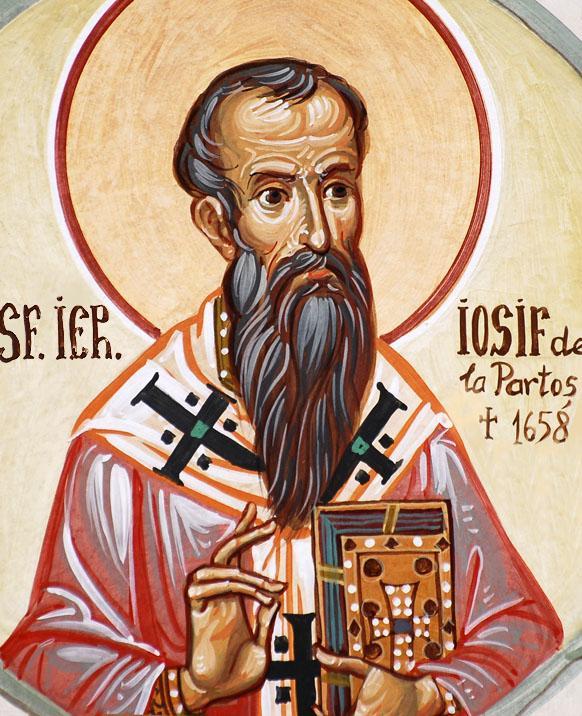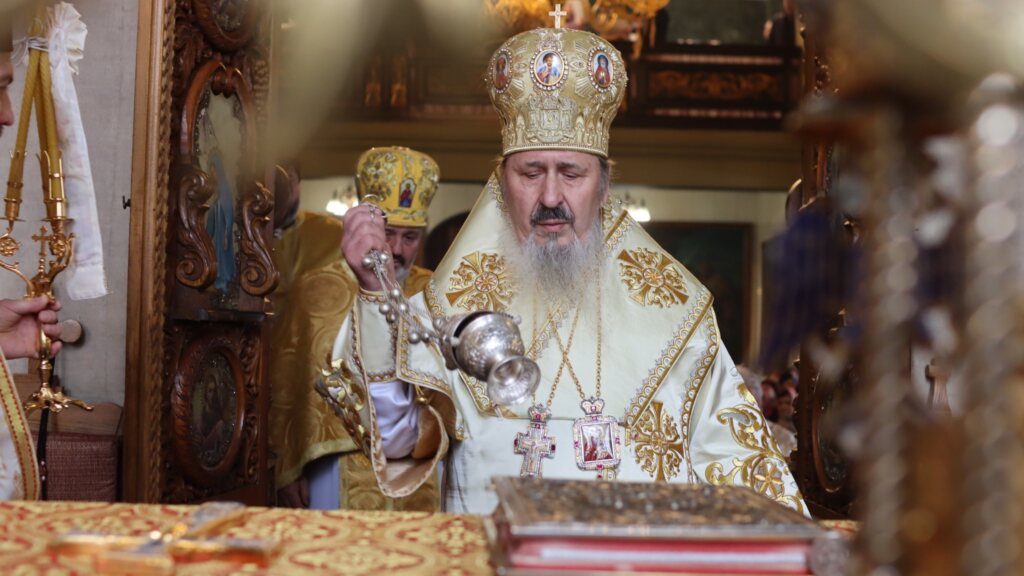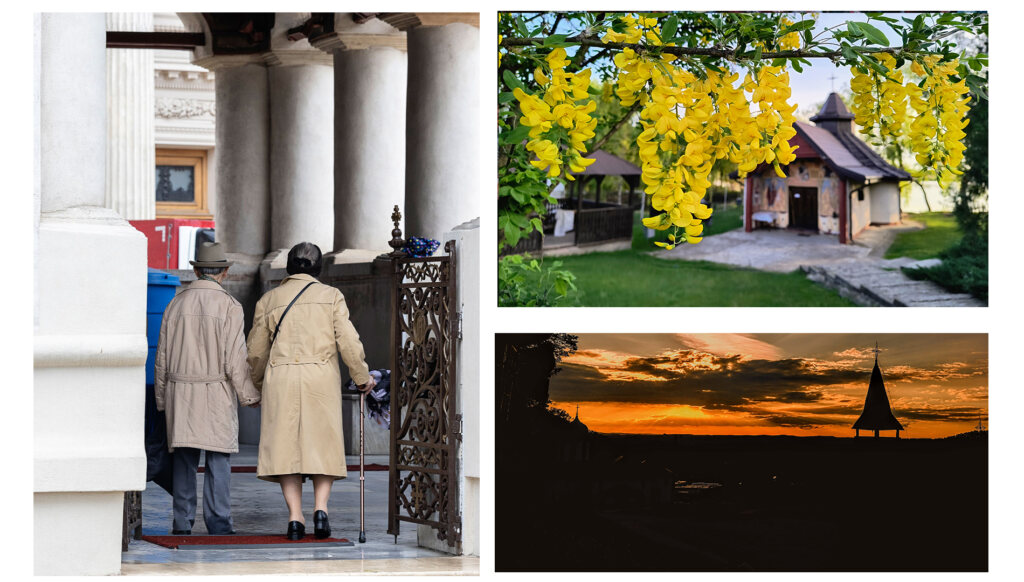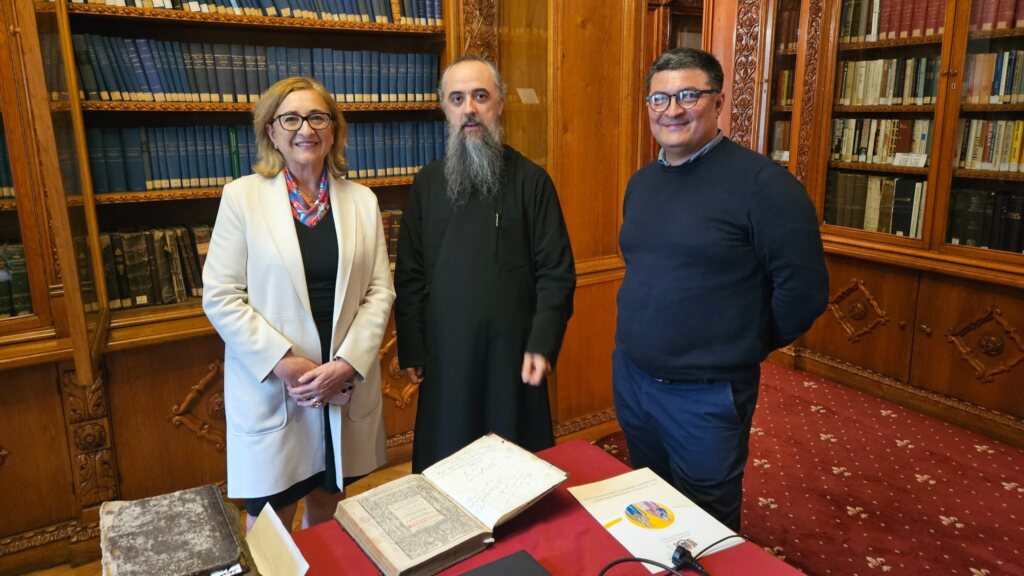Saint Joseph the New of Partos, metropolitan of Banat
Saint Joseph the New was born in 1568 at Raguza in Dalmatia, and was given the name Jacob at his Baptism. When he was very young, his father died, and he was raised by his mother. At the age of twelve, he was sent to Ochrid to be schooled.
The young Jacob was called to live the monastic life when he was fifteen, and entered the monastery of the Mother of God. After five years, he traveled to Mount Athos, and was tonsured at the Pantokrator Monastery with the new name of Joseph. He fulfilled his various obediences in an exemplary manner, becoming perfected in virtue and holiness.
He attained unceasing prayer of the heart, receiving from God the gift of tears. He also performed many miracles, healing the sick and the crippled. Some of the monasteries of the Holy Mountain would send for him so that he could heal those monks who were afflicted with severe bodily suffering.
On July 20, 1650, at the age of eighty-two, Saint Joseph was elected as Metropolitan of Timishoara. He was a wise and good shepherd to his flock, healing their physical and spiritual illnesses. Once he extinguished a fire in the western part of Timishoara by his prayers, when God sent a heavy rainfall.
After three years of archpastoral labors, he retired to the Partosh Monastery, where he was often visited by many of the faithful. The monastery was an important center of church activity in those days, and even had a school for training priests.
Metropolitan Joseph fell asleep in the Lord on August 15, 1656 when he was eighty-eight years old, and he was buried in the monastery church. He is commemorated on September 15.
He worked many miracles during his lifetime, and there are reports that his relics remained incorrupt after his death.
For more than 300 years the monks reverently tended his grave, then at his glorification on October 7, 1956 Saint Joseph’s relics were transferred into the cathedral at Timishoara. The casket containing his holy relics is adorned with carvings depicting scenes from his life.
An Akathist composed to honor Saint Joseph speaks of his many virtues
Troparion — Tone 4
In truth you were revealed to your flock as a rule of faith, / an image of humility and a teacher of abstinence; / your humility exalted you; / your poverty enriched you. / Hierarch Father Joseph, / entreat Christ our God / that our souls may be saved.
Holy Great Martyr Nicetas
He was also called „the Goth”. He was born and lived on the banks of the Danube River, and suffered for Christ in the year 372. The Christian Faith was then already widely spread throughout the territory of the Goths.
Saint Nicetas believed in Christ and accepted Baptism from the Gothic bishop Theophilus, a participant in the First Ecumenical Council. Pagan Goths began to oppose the spread of Christianity, which resulted in internecine strife.
After the victory of Fritigern, heading a Christian army and inflicting defeat on the pagan Athanaric, the Christian Faith began to spread increasingly among the Goths. The Arian bishop Ulfilas, the successor to Bishop Theophilus, created a Gothic alphabet and translated into the Gothic language many priestly books.
Saint Nicetas worked intensely among his fellow Goths at spreading Christianity. By his personal example and inspired words he brought many pagans to the Christian Faith.
However, after his defeat Athanaric again contrived to gather his own forces, return to his own country and regain his former power. Since he remained a pagan, he continued to hate Christians and persecute them.
Saint Nicetas endured many tortures, and died after being thrown into a fire. His body remained unharmed by the fire and was illumined by a miraculous light. By night, a friend of the martyr, a Christian named Marianus, retrieved the body of Saint Nicetas, and buried it in Cilicia. Afterwards, it was transferred to Constantinople.
Part of the relics of the Great Martyr Nicetas were later transferred to the monastery of Vysokie Dechani in Serbia. Saint Nicetas received an unfading crown of glory from Christ in the year 372.
We pray to Saint Nicetas for the preservation of children from birth defects.
Troparion — Tone 3
You defeated error and triumphed in martyrdom, / Nikḗtas, namesake of victory; / for you conquered the ranks of the enemy / and ended your contest by fire. / Pray to Christ our God to grant us His great mercy.
Saint Bessarion, Archbishop of Larissa
He lived during the sixteenth century and founded the Dusika monastery in Thessaly.
Troparion — Tone 4
In truth you were revealed to your flock as a rule of faith, / an image of humility and a teacher of abstinence; / your humility exalted you; / your poverty enriched you. / Hierarch Father Bessarion, / entreat Christ our God / that our souls may be saved.
Tr by oca.org






